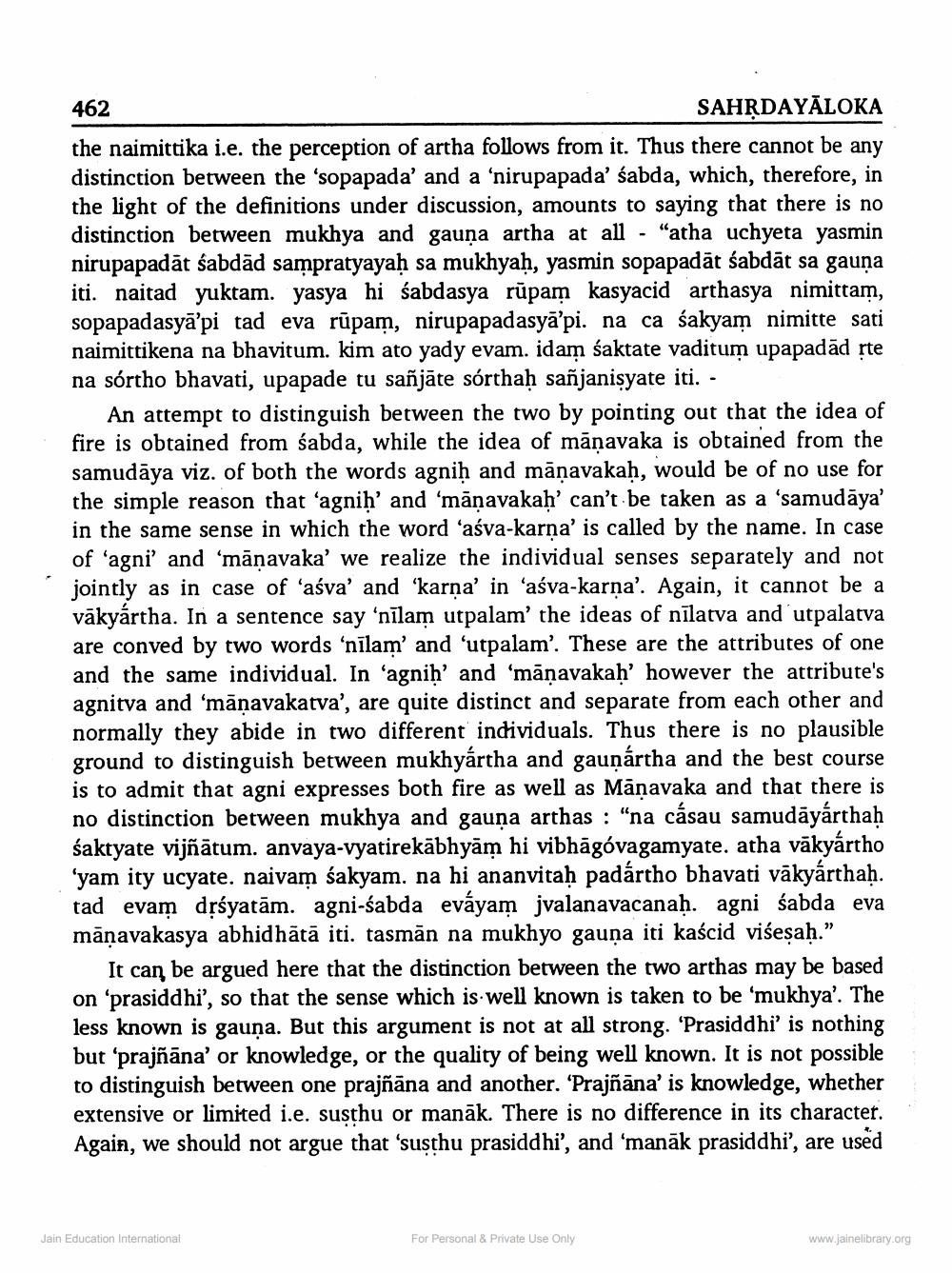________________
462
SAHRDAYĀLOKA
the naimittika i.e. the perception of artha follows from it. Thus there cannot be any distinction between the 'sopapada' and a 'nirupapada' sabda, which, therefore, in the light of the definitions under discussion, amounts to saying that there is no distinction between mukhya and gauņa artha at all - "atha uchyeta yasmin nirupapadāt sabdās sampratyayah sa mukhyah, yasmin sopapadāt sabdāt sa gauna iti. naitad yuktam. yasya hi śabdasya rūpam kasyacid arthasya nimittam, sopapadasyā’pi tad eva rūpam, nirupapadasyā’pi. na ca śakyam nimitte sati naimittikena na bhavitum. kim ato yady evam. idam saktate vaditum upapadād rte na sórtho bhavati, upapade tu sañjāte sórthaḥ sañjanisyate iti. -
An attempt to distinguish between the two by pointing out that the idea of fire is obtained from śabda, while the idea of māņavaka is obtained from the samudāya viz. of both the words agniḥ and māņavakaḥ, would be of no use for the simple reason that ‘agnih' and 'māņavakah' can't be taken as a 'samudāya' in the same sense in which the word 'aśva-karna' is called by the name. In case of 'agni' and 'mānavaka' we realize the individual senses separately and not jointly as in case of 'aśva' and 'karna' in ‘aśva-karņa'. Again, it cannot be a vākyártha. In a sentence say 'nīlam utpalam' the ideas of nīlatva and'utpalatva are conved by two words 'nīlam' and 'utpalam'. These are the attributes of one and the same individual. In 'agnih' and 'mānavakah' however the attribute's agnitva and 'māṇavakatva', are quite distinct and separate from each other and normally they abide in two different individuals. Thus there is no plausible ground to distinguish between mukhyartha and gaunartha and the best course is to admit that agni expresses both fire as well as Mänavaka and that there is no distinction between mukhya and gauņa arthas : "na cásau samudāyárthaḥ śaktyate vijñātum. anvaya-vyatirekābhyām hi vibhāgóvagamyate. atha vākyártho ‘yam ity ucyate. naivam sakyam. na hi ananvitaḥ padártho bhavati vākyárthaḥ. tad evam drśyatām. agni-sabda eváyam jvalanavacanah. agni sabda eva māņavakasya abhidhātā iti. tasmān na mukhyo gauņa iti kaścid visesah.”
It can be argued here that the distinction between the two arthas may be based on 'prasiddhi', so that the sense which is well known is taken to be 'mukhya'. The ess known is gauna. But this argument is not at all strong. 'Prasiddhi' is nothing but 'prajñāna' or knowledge, or the quality of being well known. It is not possible to distinguish between one prajñāna and another. 'Prajñāna' is knowledge, whether extensive or limited i.e. susthu or manāk. There is no difference in its character. Again, we should not argue that 'susthu prasiddhi', and 'manāk prasiddhi', are used
Jain Education International
For Personal & Private Use Only
www.jainelibrary.org




